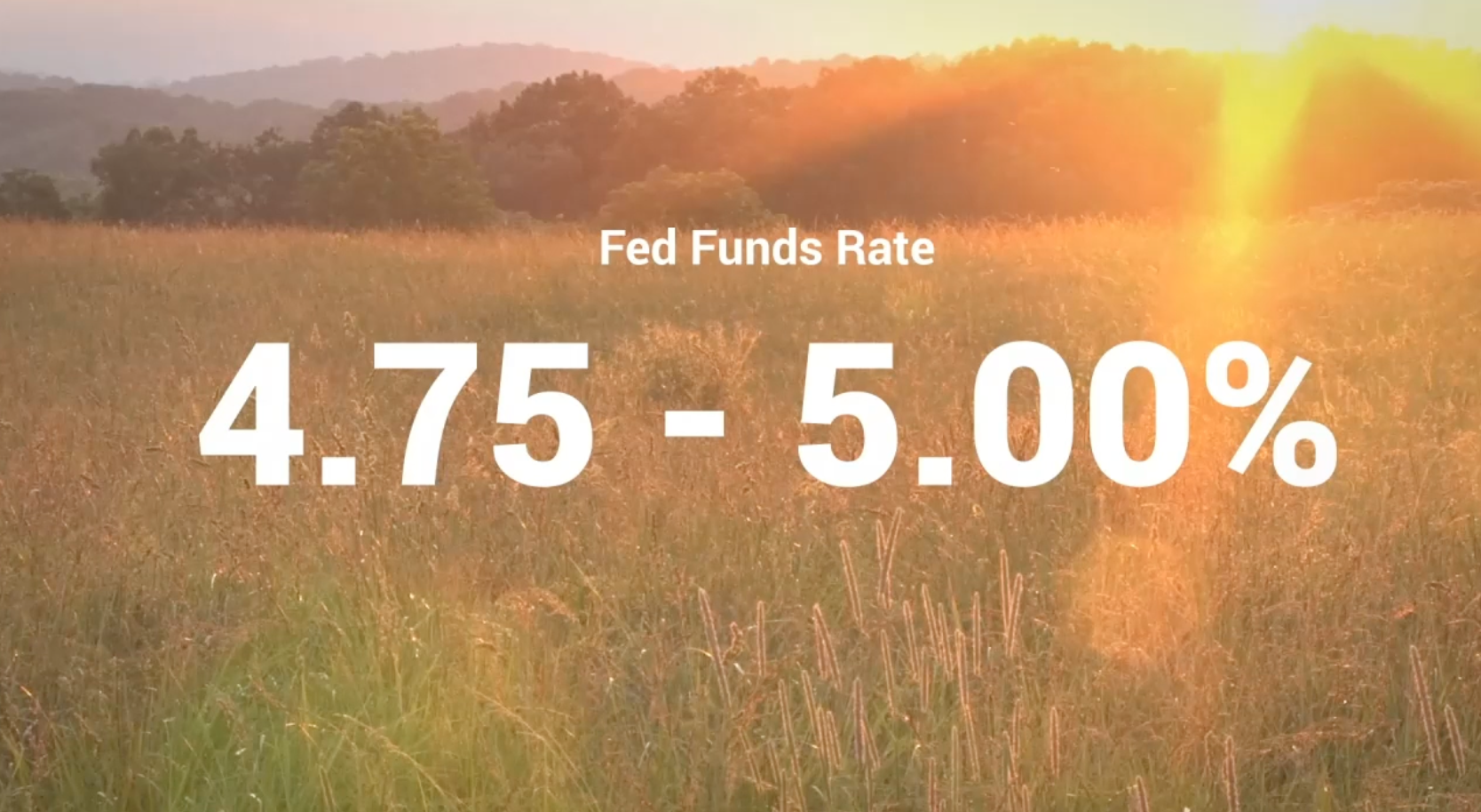Weekly Market Commentary
50-Point Rate Cut Sparks Mixed Market Reactions
Posted on September 25, 2024
50-Point Rate Cut Sparks Mixed Market Reactions
Going into last week: the odds of a 50-basis point cut to the fed funds rate began to firm up according to the CME Group’s Fed Watch tool. On Wednesday, after years of meetings with unchanged or increasing interest rates, the FOMC finally cut the Fed Funds rate for the first time since the Covid-Induced reduction.
While the history of the Effective Fed Funds rate demonstrates that moves of 50 basis points or larger are not without historical precedent, many market participants were expecting a more conservative 25 basis point reduction. Moreover, since 1990, the times that there had been a 50-basis point reduction or more were marked by a noteworthy event like Covid, the 2008 Housing Crisis, or the dot com bubble. So, that said, the November and December meetings both still favor the odds of at least one additional 50-basis point cut before the year ends.
This action was quickly picked up by politicians, some of which applauded the event or criticized the timing of the rate cut so close to the November election. This event served as a prime example that either side of the political aisle will likely grab ahold of various economic headlines for the next number of weeks in an effort to build their case for the economy and the election.
For the markets, this news was welcomed with a favorable weekly return in all five of the major markets.
However, the initial reaction in the S&P 500 showed that market participants were not overly enthused initially. Following the announcement and throughout the FOMC press conference, the S&P 500 sold off to close the day near the lows of the session. Sentiment improved Thursday as the market generated all the gains for the week within the one session.
The various sectors ended mixed with Real Estate, Consumer Staples, and Health Care in negative territory.

Major Markets |
YTD as of 09/20/2024 | ||
| Nasdaq |  |
||
| Dow Jones Industrial |  |
||
| S&P 500 |  |
||
| MSCI World |  |
||
| MSCI EM |  |
||
| Russell 2000 |  |
||
| Bar US Agg Bnd |  |
||
 |
|||
S&P Sectors |
|
|||||
| Comm. Services |  |
|||||
| Cons. Discretionary |  |
|||||
| Cons. Staples |  |
|||||
| Energy |  |
|||||
| Financials |  |
|||||
| Health Care |  |
|||||
| Industrials |  |
|||||
| Info. Technology |  |
|||||
| Materials |  |
|||||
| Real Estate |  |
|||||
| Utilities |  |
|||||
 |
||||||
| Agent/Broker Dealer Use Only | ||||||
The yield curve flattened ever so slightly. Increases in yield for the intermediate to longer-term end of the curve while the three month and six-month yields dropped 22 and 17 basis points respectively.
While the Fed Funds rate dropped, the flattening of the yield curve caused the Bloomberg Barclays Aggregate Bond Index to fall last week. The loss of just under a quarter percent highlighted that while headline moves in segments of the market may grab attention. However, there are other factors or implications that can shape the various indices.
https://www.cnn.com/2024/09/18/politics/fed-rate-cut-2024-election/index.html
Concerned about inflation? Check out our Tips to Reduce Risks In Case of Recession.
| The S&P 500® Index is a capitalization index of 500 stock-designed to measure performance of the broad domestic economy through changes in the aggregate market value of stock representing all major industries. https://us.spindices.com/indices/equity/sp-500 The Dow Jones Industrial Average® (The Dow®), is a price-weighted measure of 30 U.S. blue-chip companies. The index covers all industries except transportation and utilities. https://us.spindices.com/indices/equity/dow-jones-industrial-average The NASDAQ Composite Index measures all NASDAQ domestic and international based common type stocks listed on The NASDAQ Stock Market. Today the NASDAQ Composite includes over 2,500 companies, more than most other stock market indexes. Because it is so broad-based, the Composite is one of the most widely followed and quoted major market indexes. https://indexes.nasdaqomx.com/Index/Overview/COMP The MSCI World Index, which is part of The Modern Index Strategy, is a broad global equity benchmark that represents large and mid-cap equity performance across 23 developed markets countries. It covers approximately 85% of the free float-adjusted market capitalization in each country and MSCI World benchmark does not offer exposure to emerging markets. The MSCI Emerging Markets (EM) Index is designed to represent the performance of large- and mid-cap securities in 24 Emerging Markets countries of the Americas, Europe, the Middle East, Africa and Asia. As of December 2017, it had more than 830 constituents and covered approximately 85% of the free float-adjusted market capitalization in each country. https://www.msci.com/ The S&P GSCI Crude Oil index provides investors with a reliable and publicly available benchmark for investment performance in the crude oil market. https://us.spindices.com/indices Companies in the S&P 500 Sector Indices are classified based on the Global Industry Classification Standard (GICS®). https://us.spindices.com/indices |






